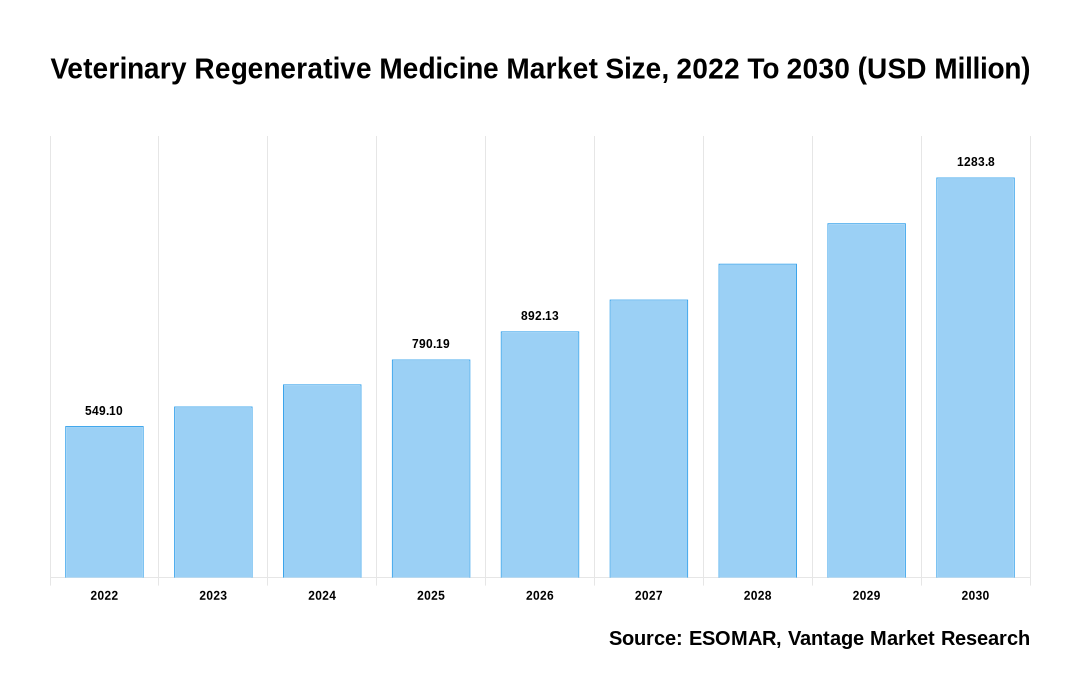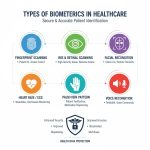Global Veterinary Regenerative Medicine Market
As stated in our extensive report, the Global Veterinary Regenerative Medicine Market accounted for USD 549.1 Million in the year 2022 and is projected to reach a value of USD 1283.8 Million by 2030.
The global Veterinary Regenerative Medicine market is poised for strong growth in the coming years, driven by the increasing adoption of regenerative therapies and the growing prevalence of chronic diseases in animals. Regenerative medicine is a rapidly evolving field that offers innovative treatments to repair or replace damaged tissues and organs in animals using stem cells, growth factors, and other biological materials.
One of the key drivers of the Veterinary Regenerative Medicine market is the rising demand for non-invasive and non-surgical procedures, which can reduce the need for expensive and invasive surgeries, as well as improve animal welfare. Additionally, regenerative therapies are being increasingly used in the treatment of a range of chronic conditions, such as osteoarthritis, tendon and ligament injuries, and skin wounds, among others.
Another factor driving growth in the Veterinary Regenerative Medicine market is the growing awareness and interest among pet owners and veterinarians in alternative and complementary therapies, which offer new treatment options beyond traditional pharmaceuticals and surgeries. Furthermore, technological advancements in the field, such as the development of novel biomaterials and cell-based therapies, are expected to further propel market growth in the coming years.
Click To Get a Free Sample On the Research Study

Key Factors Influencing Global Veterinary Regenerative Medicine Market Growth
The growth of the global Veterinary Regenerative Medicine market can be attributable to the following:
- Stem cell therapy is a promising area of regenerative medicine that has shown great potential in treating various chronic diseases and injuries in animals. This therapy involves the use of stem cells, which can differentiate into different types of cells and tissues, to repair damaged tissues and organs. The increasing adoption of stem cell therapy is expected to drive the growth of the Veterinary Regenerative Medicine market.
- The prevalence of chronic diseases, such as osteoarthritis, diabetes, and cancer, is increasing in animals. This has led to a growing demand for innovative and effective treatments that can improve the quality of life of animals. Regenerative medicine offers new treatment options that can address these chronic conditions, leading to increased demand for regenerative therapies.
- Technological advancements in regenerative medicine are opening up new possibilities for the treatment of various animal diseases and injuries. For instance, the development of novel biomaterials and cell-based therapies is enabling the development of new treatment options for chronic conditions, such as osteoarthritis, and acute injuries, such as tendon and ligament injuries.
- There is a growing awareness and interest among pet owners and veterinarians in alternative and complementary therapies, such as acupuncture, herbal medicine, and regenerative medicine. This trend is expected to drive the demand for regenerative therapies in the veterinary industry.
- The regulatory environment for veterinary regenerative medicine is becoming more favorable, with regulatory agencies recognizing the potential benefits of these therapies for animal health. This is expected to encourage the development and commercialization of regenerative therapies, driving the growth of the Veterinary Regenerative Medicine market.
However, there are also some challenges that need to be addressed, such as the high cost of regenerative therapies and the need for more clinical evidence to support their safety and efficacy.
North America Region to Take Over the Market
North America is currently the largest region in the global Veterinary Regenerative Medicine market, accounting for major market share. The growth of the market in North America is driven by factors such as the increasing adoption of stem cell therapy and the growing prevalence of chronic diseases in animals. Additionally, the region has a well-established veterinary healthcare system and a strong research and development infrastructure, which has led to the development of new and innovative regenerative therapies. The presence of major players in the region is also contributing to market growth, as these companies are investing in research and development activities to bring new products to the market. Overall, North America is expected to maintain its dominance in the global Veterinary Regenerative Medicine market in the coming years, driven by the growing demand for innovative and effective therapies for animal health.
Conclusion
The global Veterinary Regenerative Medicine market is poised for strong growth in the coming years, driven by factors such as increasing adoption of stem cell therapy, growing prevalence of chronic diseases in animals, and technological advancements in the field. The market is also being propelled by the growing awareness and interest in alternative and complementary therapies, as well as the favorable regulatory environment for regenerative medicine in the veterinary industry. While there are challenges, such as the high cost of regenerative therapies and the need for more clinical evidence, the market is projected to continue its growth trajectory. With the largest region being North America, the market is expected to witness significant growth across other regions, such as Europe and Asia Pacific, driven by the rising demand for innovative and eco-friendly products in the animal healthcare industry.
Notable and prominent players in the Global Veterinary Regenerative Medicine Market include- VetStem, Inc.; Vetherapy; Boehringer Ingelheim International GmbH; Vetbiologics; Animal Cell Therapies, Inc.; Ardent; Zoetis; Dechra; ACell Inc, to name a few.
![[Market Research Reports] – Research Google News Blog | VMR.Biz](https://www.vmr.biz/wp-content/uploads/2022/12/logo-removebg-preview.png)











